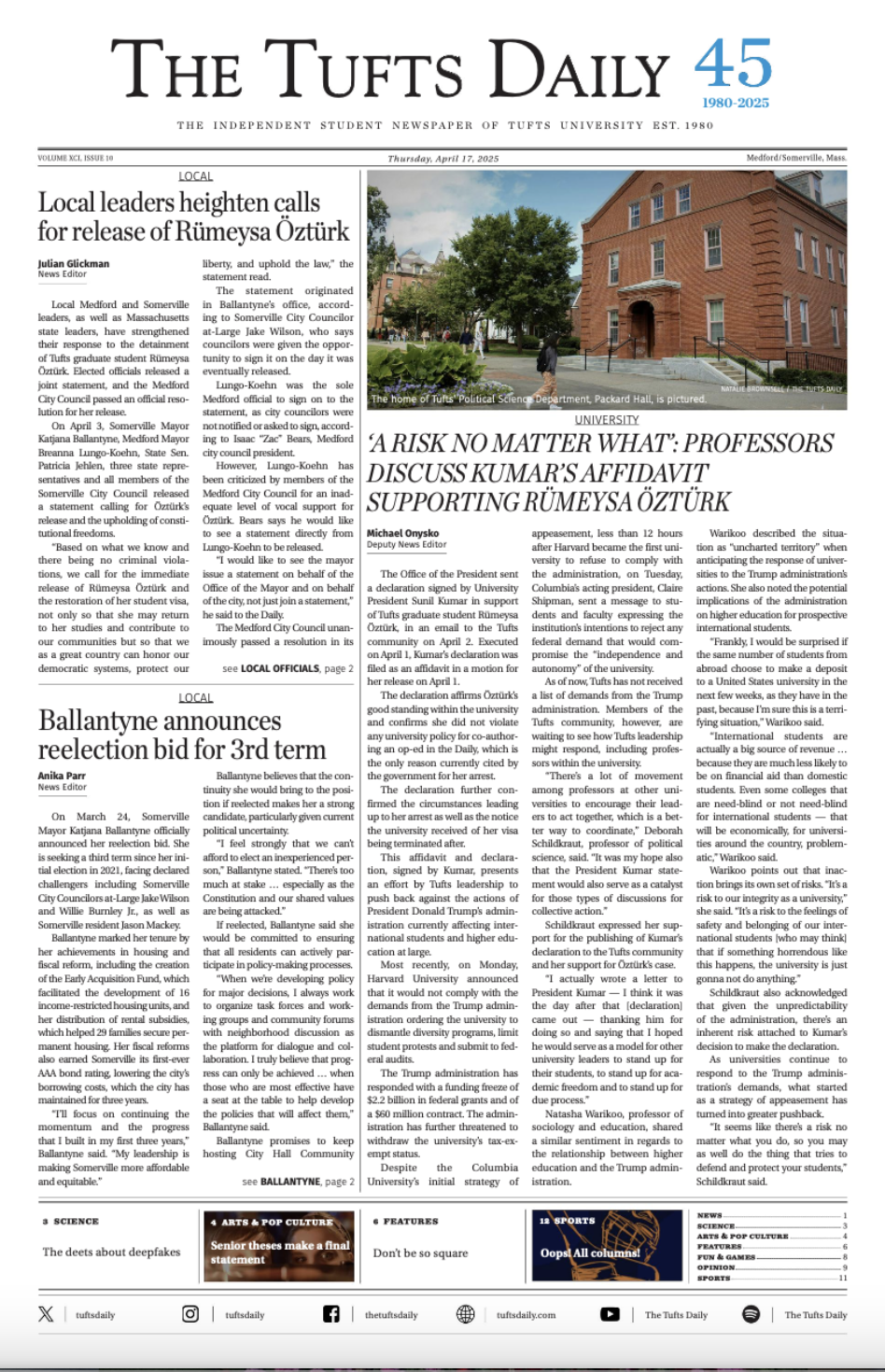My childhood was filled with trips to museums. I remember seeing an Amedeo Modigliani exhibit at the Jewish Museum with my grandparents and going on field trips to The Metropolitan Museum of Art. It was natural for me to take art history in high school and continue my studies at Tufts. I look forward to starting a master’s program in this field, and yet something doesn’t feel right about continuing on this path blindly.
I had the privilege of growing up seeing my white face in the paintings at The Met. My grandparents grew up learning about European art and were eager to pass along their passion. Would I have had the same connection to art if I hadn’t recognized myself in these paintings? Had I not attended an elementary school across the street from The Met, would I have gone on as many museum field trips?
I love art because I have the privilege to do so. That’s not to say that non-white people or people who aren’t upper-middle-class don’t go to museums, because they do. But it would be remiss to assume that we are all given equal opportunity to enjoy art. Museums require an entrance fee. Not all schools are located right in the middle of Museum Mile, and most don’t offer art history. Lastly, the art history canon is historically elite and Eurocentric.
The art world is changing but not quickly enough to catch up to the social progress over the last few decades. Now, I think that Tufts does a pretty good job of diversifying its art history courses. This semester, there were courses that covered art in Mexico, the United States, France and Italy, as well as overarching courses that focused on the art of Islam, Asia, Africa and the Mediterranean. However, it is hard not to wonder about art history’s institutionalized bias when the department offers a course called “Intro to the Arts of Africa” this fall. Would there be a course entitled “Intro to the Arts of Europe?” I’d like to see courses centered around specific African countries and movements, the way we focus on the Italian Renaissance and French Impressionism. This requires an examination of the discipline of art history beyond Tufts.
The Met Breuer just closed a retrospective of Kerry James Marshall, a black American artist whose work "synthesizes a wide range of pictorial traditions to counter stereotypical representations of black people in society and reassert the place of the black figure within the canon of Western painting,” according to The Met’s website. The inclusion of female, POC and queer artists in major museums is a huge step toward equality in the art world. However, we cannot let these exhibitions become diversity tokens. All four of the current exhibitions at the Breuer display work by white artists. The same art world that presented the Marshall retrospective skims over non-European art in academia every day. We cannot become complacent as viewers, consumers and art historians. It is our responsibility as viewers to demand the presence of non-white artists in our institutions. It is our duty as students within the field to research and curate their work thoughtfully.
-Chloe Hyman, Polykhroma
More from The Tufts Daily





